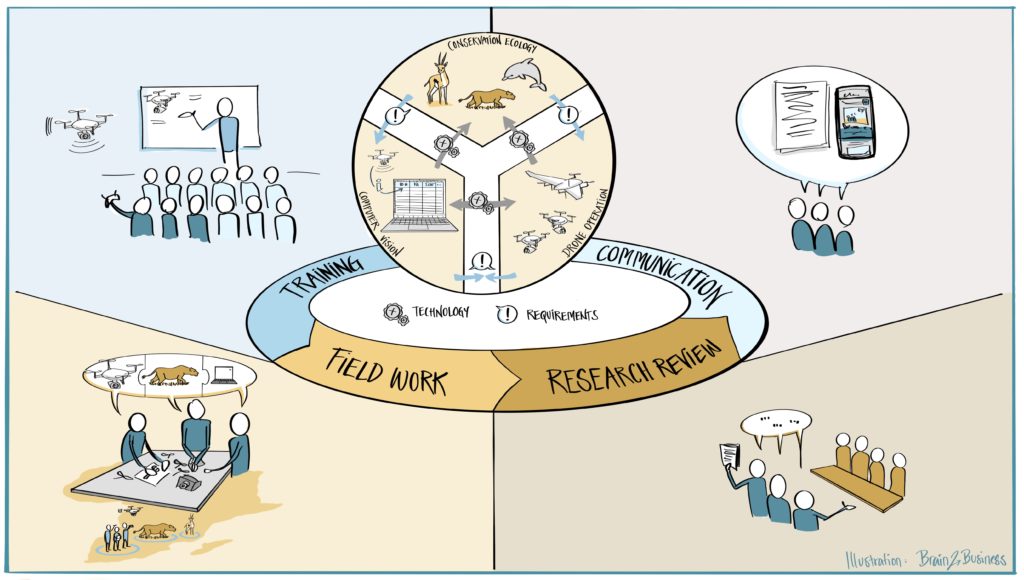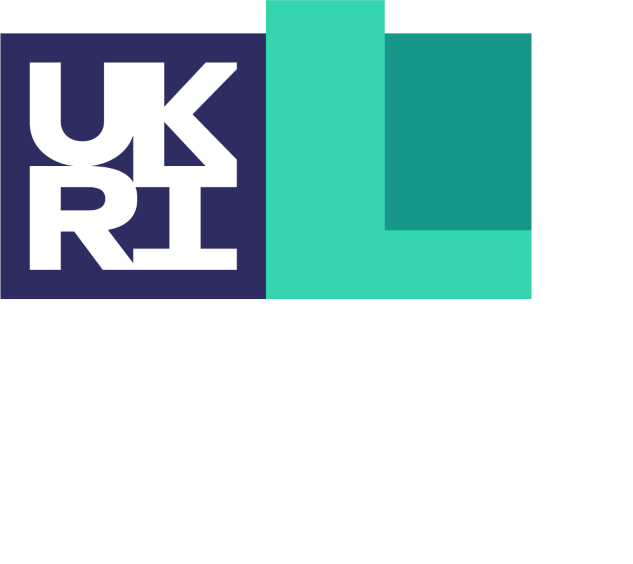Methodology
The network’s research methodology is based on developing novel drone- and computer-vision-driven technologies and to generate discoveries through ecological studies. WildDrone is founded on three major scientific thematic areas and relies on a cycle of iterative improvements where technological limitations are continuously balanced against domain requirements to achieve a synergy between drones, computer vision, and ecology. Forward interactions (new technology made available) and backward interactions (new requirements are set) will be pursued constantly in the project. They will be explicitly addressed during the two joint field trip hackathons in Kenya at Ol Pejeta Conservancy, where all PhDs will jointly test their latest developments.

The 3 Themes
Automated Wildlife Tracking for Conservation Practice
Theme 1 focuses on innovative applications of ecology science for drone-based nature conservation practices. PhDs in Theme 1 will produce ecological knowledge currently too costly and time-consuming to produce at this scale. They will start their research using consumer drones and state of the art algorithms and will progressively integrate the advanced software and hardware developed by the other PhDs. Additionally, they will assess the performance capabilities of low-cost, commercially available drones to determine which applications require more specialized and/or novel drone equipment.
Safe and Flexible Drone Operations
Theme 2 will innovate on drone design, operations, and control. PhDs in Theme 2 will work together to develop a new generation of drones, adapted to the needs of ecology and nature conservation. The technological development will encompass both highly versatile but costly designs suitable for long-range safety-critical operations, as well as simpler and cheaper designs suitable for end-users in low-income countries.
Effective Computer Vision for Conservation
Theme 3 will develop computer vision techniques focusing on vision-based control, tracking, animal censuses and individual characterization. PhDs in Theme 3 will work together to produce software (onboard and desktop) specifically designed for animal conservation, with requirements and generalization abilities defined, studied, and validated by the ecologists in the consortium. They will explore the adequacy of citizen science to scale labels acquisition and individual identification, providing transferable tools scaling up research involving supervised computer vision for animal conservation and beyond.
Science that Matters
We will produce “science that matters” by developing technology in close collaboration with end-users, including nature reserves partners, an environmental protection agency, and industrial partners. The challenges studied in Theme 1 are crucial and costly problems in wildlife conservation defined by our partners: wildlife movement and behavioural monitoring, human-wildlife conflict mitigation, and quantification of environmental parameters that affect animal physiology and behaviour. We will build a solid foundation for long-term, interdisciplinary European and African excellence and innovation in technology-assisted wildlife conservation. This will be achieved by fostering cross-domain interaction through joint field work in ecological science and nature conservation practice; by sharing research infrastructures for field testing; and by disseminating the research and training outcomes and best practices of WildDrone in the doctoral schools of the partners and through public communication and events. We aim to foster long-term partnerships and collaboration mechanisms that will extend beyond the network’s timeframe.
Open Science
The use of open science practices is considered essential and will follow general principles that are applied in each scientific theme under the guidance of the theme supervisors. Citizen science plays a significant role across the three themes. The research outputs will be made freely available by depositing all publications in open access repositories and on the project website. The non-confidential research data from WildDrone will be made publicly available through research data repositories. The use of an early release model will be encouraged. Together with transparent practices, publicly available data and the code released, the research will become fully reproducible.

Get in touch
Contact us on WildDrone@sdu.dk



WildDrone is an MSCA Doctoral Network funded by the European Union’s Horizon Europe research and innovation funding programme under the Marie Skłodowska-Curie grant agreement no. 101071224. Views and opinions expressed are those of the author(s) only and do not necessarily reflect those of the European Union or the European Commission. Neither the EU nor the EC can be held responsible for them.
